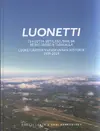https://fi.m.wikipedia.org/wiki/Aleksandr_Kuprin
Etsin Aleksandr Kuprinin "Vähän Suomea" novellin(?)
Osuva ja hyvä kirjoitus Suomesta, mutta en löytänyt sitä netista suomen kielellä. Voiko joku auttaa...
Juuri tämä - Hiukan Suomesta. Todella harmi, kuin asken sitä venäjäksi ja haluaisin postata suom,kaverille,mutten löytänyt mistään..
Kuukelin pikakäännös englantiin. Aika hyvin toimii.
Here they love flowers and at every family event, they give each other to each other. In every house, in any, even the most inferior, third-rate restaurant, you will see on the tables and on the windows flowers in pots, baskets and vases. In small Helsingfors there are more flower shops than in St. Petersburg. And on Sundays in the morning on a large square near the seashore there is a big bargaining of flowers brought from the neighborhood. Their cheapness is striking: three brands cost a tremendous bush of blooming azalea. For one and a half stamps (fifty kopecks with a small) you can buy a small basket with lilies of the valley, hyacinths, daffodils. And this is the outcome of the winter.
At Christmas, on the Christmas tree, they give each other presents. Here, again, the practical spirit of the peasant people affects: they give only home essential things, for the most part of their product. It is especially customary to give men a warm lower knitted suit. This suit tightens the entire body, it knits whole from neck to soles and fastens on the back. Most men wear such warm tights under their clothes, and it's understandable why Finns dress so easily even in severe frosts.
Everyone, of course, heard about the general literacy of the Finns, but, perhaps, not all of them saw their elementary public schools. I was led to examine in some detail the new city school, located on the outskirts of the city, in T616. It is a palace built three or four years ago, in three floors, with squared square windows, with stairs, like in the palace, according to all the rules of modern hygiene.
I walked around the classrooms immediately after the lessons had ended. Each of us, of course, remembers that terrible, intolerable stinking air that stagnates in the classes of our gymnasiums, buildings and real schools after three or four lessons. On urban schools and say nothing! And so I literally was struck by the purity of the air that was in the study rooms of the Finnish lower school. This is achieved, of course, by applying the most advanced ventilation, but mainly by the fact that Finns are not at all afraid of fresh air and at any convenient opportunity leave the windows open wide. Any trifle, serving for the convenience and benefit of schoolchildren, is thought here with remarkable love and care. The shape of the benches and inkwells, the landmarks, the collections, the physical and natural cabinets, the coloring of the walls, the enormous height of the rooms, the chasm of light and air, and, finally, even such a trifle as the flowers on the windows - flowers that bring great pleasure to the school themselves students - all this touchingly testifies to a considerate and reasonable, serious and loving attitude to the matter.
Like a gymnastic hall, as in this four-grade lower school, I have not seen anywhere in Russia, in the riches and wit of devices and the dapper purity in which it is contained. Near the gymnasium there is a small corridor, and in it along both walls there are long scales with many small cells. Above each cell is written the surname of the pupil or student, and there are gymnastic shoes, all of the same pattern, light, linen, with rope soles.
Sport here is at a premium, but again, the sport is reasonable and, if you like, patriotic.
Almost no boy you will not see here on the street without skates in your hands. On holidays, girls, students, clerks, clerks, very often elderly and even fat and gray people, go with skis somewhere to the edge of the city. Everywhere in the windows of photographers you will see snapshots from the famous jumps of thirty-two meters long or more. With astonishment you see in the photo, as a man on skis, in a warm leotard and in a knitted hat cap, having finished running on the mountain to the edge of the cliff, flies by force of inertia through the air high above the heads of the people below.
In the summer Finnish youth gathers in gymnastic societies, runs jogging, throwing disks and copies, jumping in width and in length and in particular by swimming, in which the Finns do not have rivals in Europe. I will say without exaggerating that every Finn is passing through such a healthy, free school that brings up spirit and body.
Their women and daughters no less than men like skating and skiing and are also not afraid of either frost or through wind. I can never forget that twelve-thirteen-year-old girl who once, at a frost of sixteen degrees, passed a monument to the poet Runeberg with his neck open on the collarbone, with a small cloth beret on his head and skates under his arm. I can not say that she was beautiful, but so much freshness, vivacity, deft confidence in the movement was in her that I involuntarily admired. Strong, healthy, glorious northern blood!
Immediately in a row, I want to say a few words about Finnish art. I spent several days in Helsingfors Atheneum, in this magnificent national art museum. I was in love then - I can not find another word - in the triptych of Galen on the motif from "Kalevala". I know, if fate brought me back to Helsingfors, I'm the first to go straight from the wok











